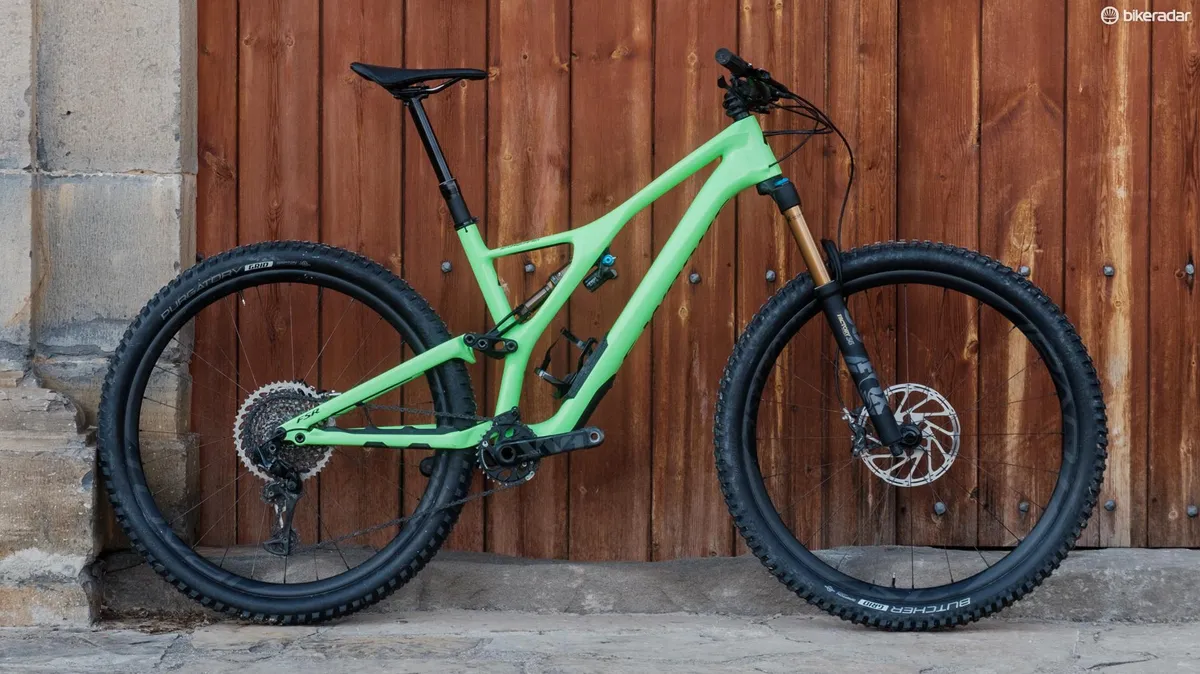Specialized has today launched its new, totally redesigned Stumpjumper trail bike and it’s longer, slacker and more capable than ever before.
- Specialized Bikes reviews and buying advice
- Specialized Stumpjumper vs Stumpjumper EVO
- Specialized Stumpjumper — range overview, design notes and details
2019 Specialized S-Works Stumpjumper 29er long travel build highlights
Last month, I was invited to Ainsa in the north of Spain to ride the new Specialized S-Works Stumpjumper.
Over three days I took in close to 75 km of riding and 4,300m of descending on the huge network of trails around Ainsa. This meant that I had more than enough time to fettle with the bike to get it riding just so.
Rather than chop and change between too many builds, I opted to focus my time on the long-travel 29er version of the bike for the first two days of riding, then spent the third day shuttling one area while swapping between this and the Evo version of the bike.
You can read about the rest of the Stumpjumper range here.
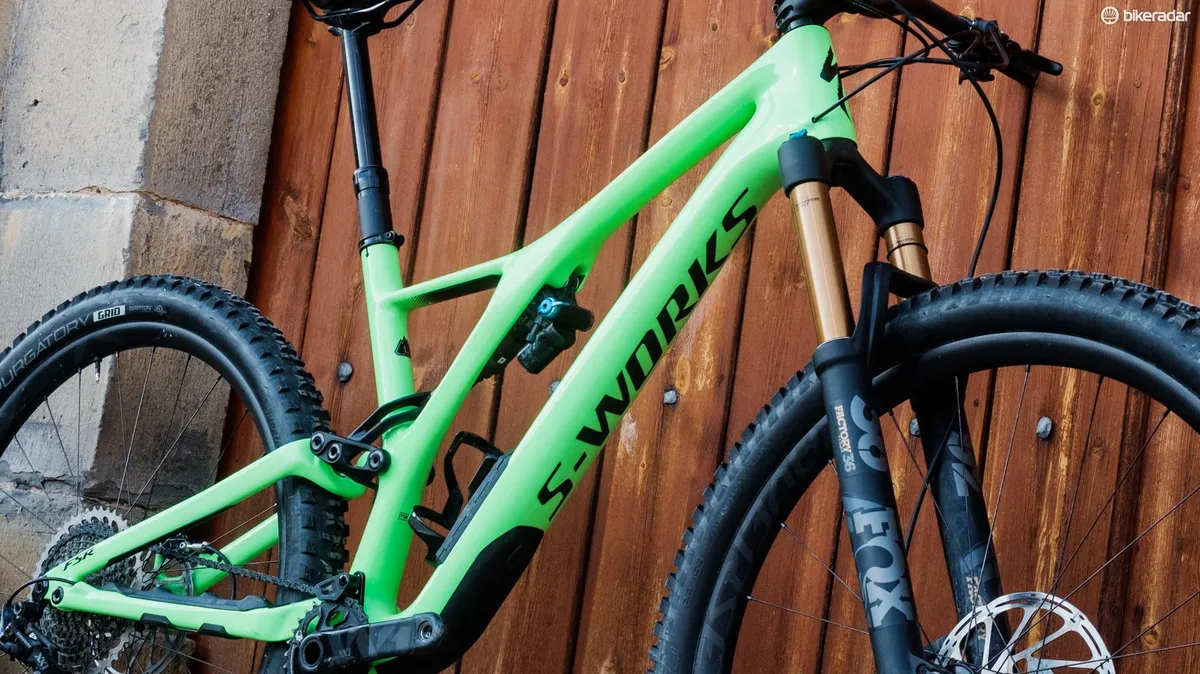
Specialized S-Works Stumpjumper 29er long travel spec
I was spoilt with a top-end $9,500 S-Works version of the new Stumpjumper, which was kitted out to the nines with the most delectable build imaginable: a SRAM Eagle XX1/XO1 drivetrain, a Fox 36 Factory FIT4 fork, carbon Roval Traverse SL wheels and a smattering of carbon Specialized finishing kit.
- Frame: FACT 11m, full carbon chassis and rear end, asymmetrical design, SWAT Door integration, threaded bottom bracket, fully enclosed internal cable routing, 12x148mm dropouts, sealed cartridge bearing pivots, replaceable derailleur hanger, 140mm of travel
- Fork: Fox 36 29in 150mm Factory, Fit4 damper
- Shock: Fox Float DPX2 Factory, Rx Trail Tune, EVOL Air sleeve, Kashima Coat, three-position adjustment with Open Mode adjustment, 210x50mm
- Drivetrain: SRAM XO1/XX1
- Wheelset: Roval Traverse SL 30mm internal width, carbon
- Front tyre: Butcher, GRID Casing, GRIPTON compound, 29x2.6in front
- Rear tyre: Purgatory, GRID Casing, GRIPTON compound,29x2.6in
- Front brake: SRAM Guide RSC, hydraulic disc, organic pads, Guide S4 four-piston caliper, 200mm rotor
- Rear brake: SRAM Guide RSC, hydraulic disc, organic pads, Guide S4 four-piston caliper, 180mm rotor
- Bar: Specialized Trail, FACT carbon, 6-degree upsweep, 8-degree backsweep, 27mm rise, 780mm, 31.8mm
- Stem: Syntace MegaForce 2, 6-degree, 31.8mm clamp
- Seatpost: Command Post IRcc, 16-position micro-height adjustable, remote SRL lever, 160mm
- Saddle: Body Geometry Phenom Expert, hollow titanium rails, carbon fibre base, 143mm
It’s worth noting that the geometry of the S-Works models is exactly the same as the rest of range.
Specialized S-Works Stumpjumper 29er long-travel first ride impressions
Specialized S-Works Stumpjumper 29er long-travel first ride impressions
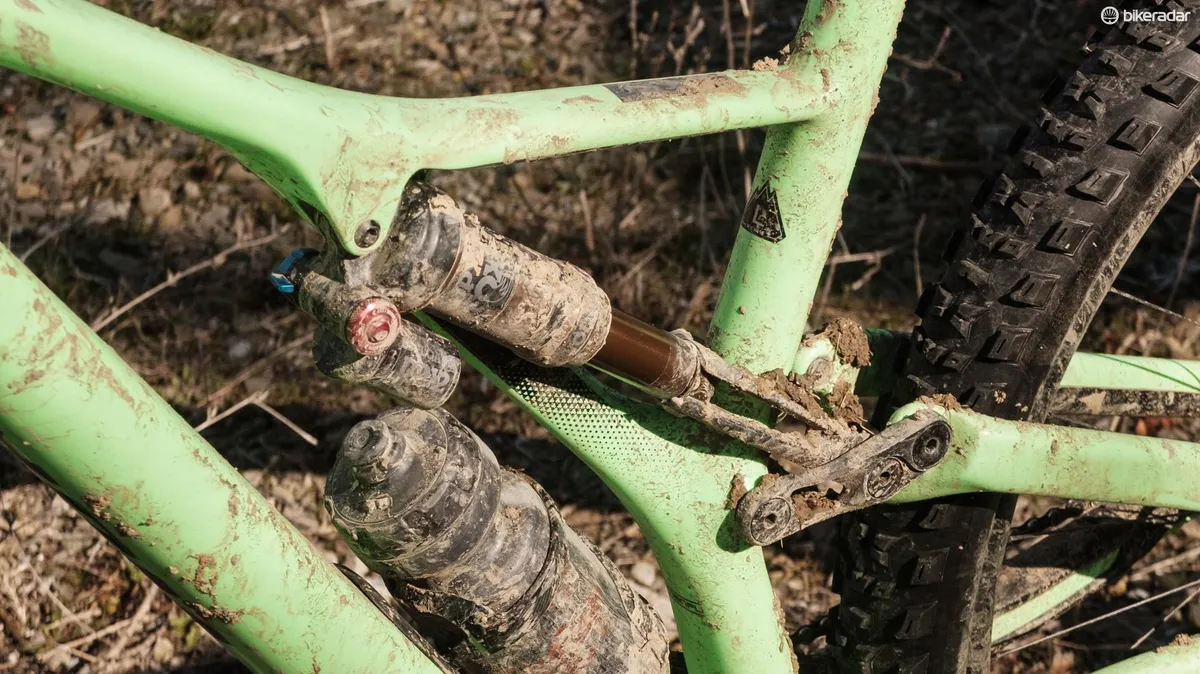
Specialized claims that improving frame stiffness was one of its primary goals when redesigning the Stumpjumper and the brand’s efforts seem to have paid off — the bike feels confident in hard corners and accurate on fast twisty trails, with no unnerving vagueness or wagging from the rear end.
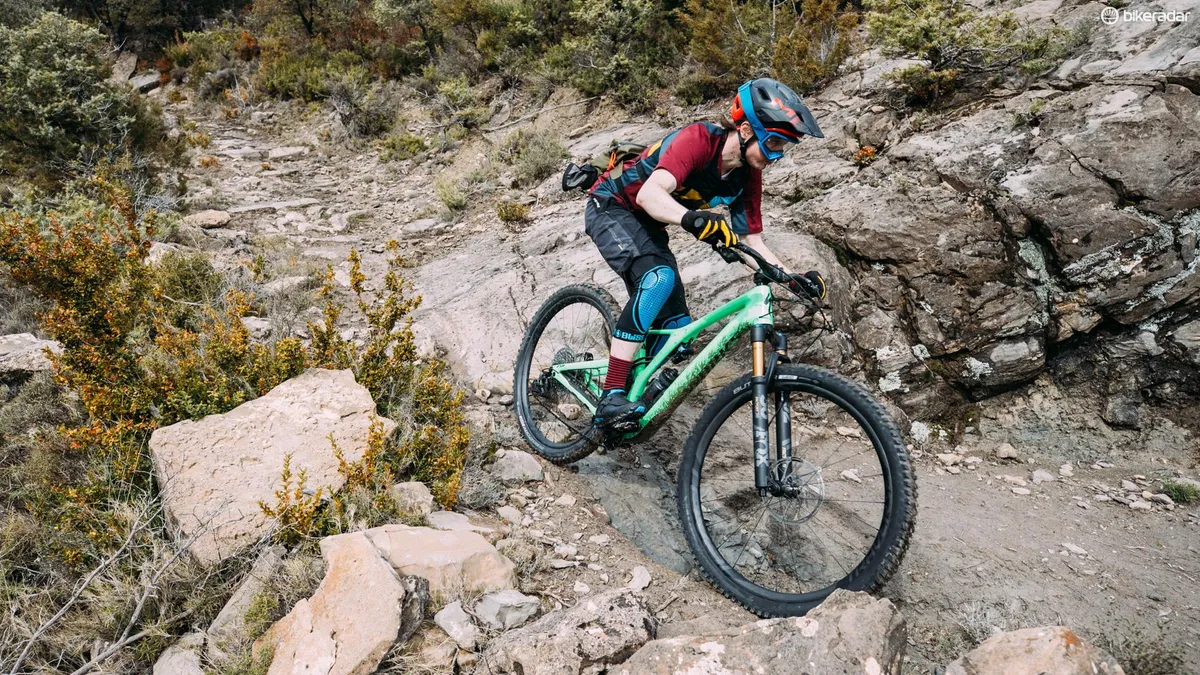
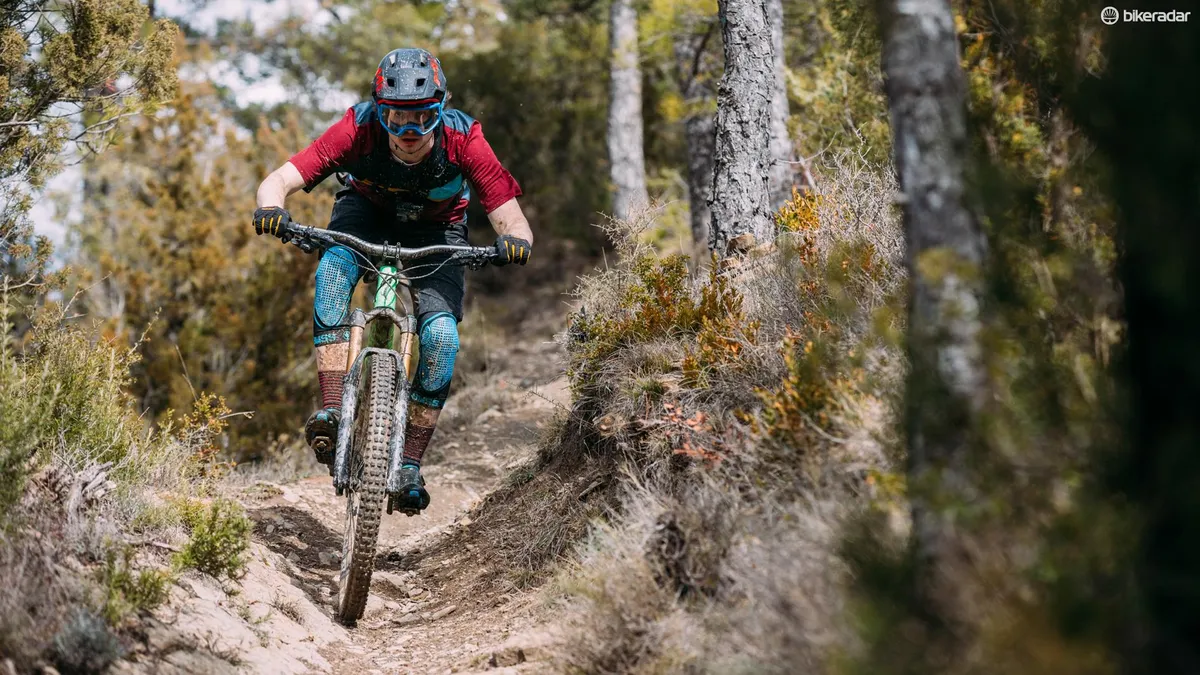
Front end stiffness is also excellent, though the burly Fox 36 fork will no doubt contribute to this.
The suspension ticks off all the boxes you’d expect of a modern trail bike and the well-proven FSR platform — small bump sensitivity is excellent, the mid-stroke is supportive and ramps up nicely to cope well with big hits (is this phrase the new ‘laterally stiff and vertically compliant’?).
The suspension bobs a bit under pedalling hard when climbing, but switching the shock to ‘climb’ mode cures this. This will irk some riders, but I really don’t see an issue with needing to use a lockout to create a firm pedalling platform on a trail bike.
The 66.5-degree head angle strikes a good balance between control at high speed and playful manoeuvrability. If you favour a more slacked out ride, you can always flip the geometry adjust chip to knock off 0.5 degrees or fit an angle set (or buy an Evo!).
I spent too long being a typically diva-like journalist, fettling with tyre pressures, swapping out tokens and generally annoying the Specialized mechanics to leave enough time to play with these chips. However, I have a sneaking suspicion flipping these and running the bike in ‘low’ mode will make it even more capable.
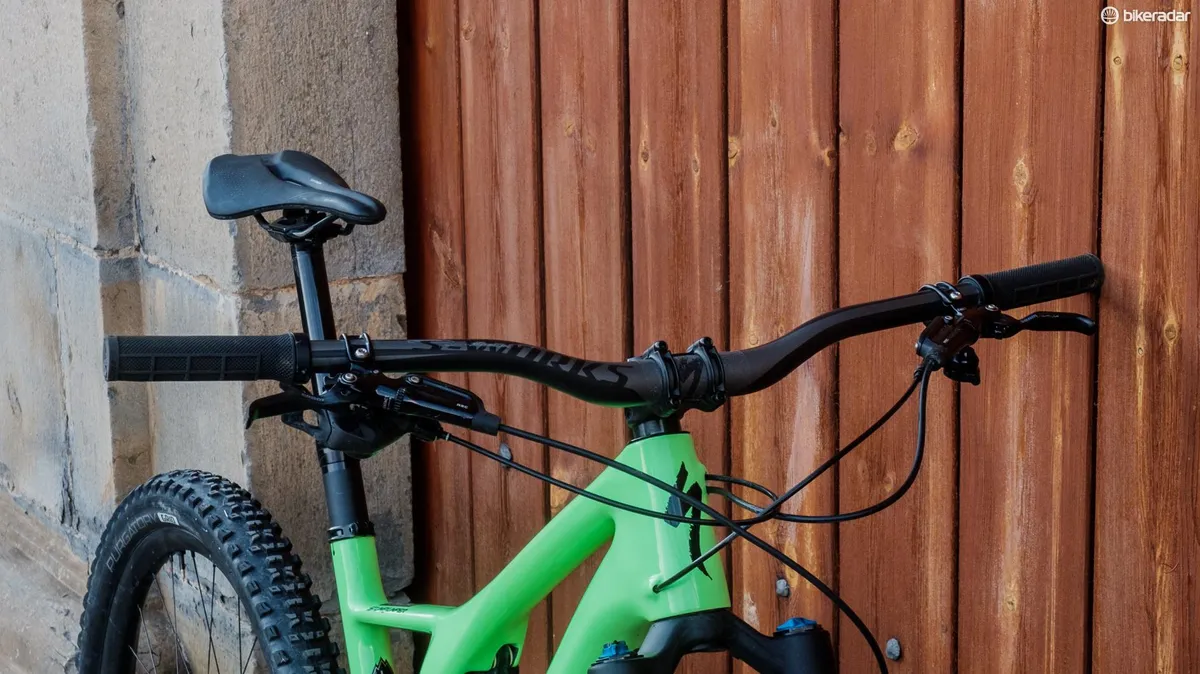
At 641mm on the size large frameset I was riding, the Stumpjumper has a higher than average stack for a 140mm travel trail bike. Coupled with the 27mm rise bars, this makes for a truly lofty front end.
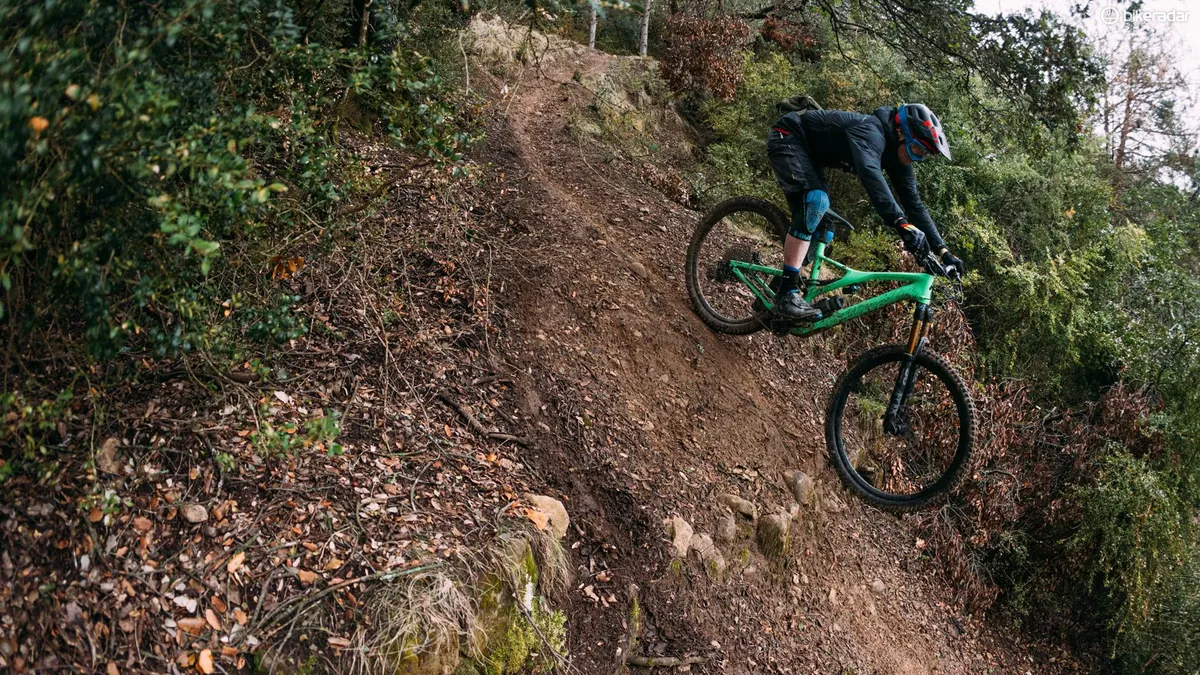
This high front end coupled with the 50mm Syntace stem makes for a very confidence-inspiring and easily controlled ride on steep descents.
At 445mm in a size large, the reach of the new Stumpjumper isn’t particularly long, but it’s worth bearing in mind that at 140mm, the head tube of the Stumpjumper is longer than average — to get the same bar height on a bike with a shorter head tube you would need to use a stack of spacers, bringing the ‘effective’ reach down.
This is, of course, a small change, but one worth pointing out in a world where a handful of millimetres is all that separates many bikes.
At 780mm wide, Specialized’s own Trail FACT carbon handlebars will be wide enough for most tastes, but I would have personally preferred something a touch wider — you can always cut down a bar, but you can’t make one wider. The 27mm rise of the bars also gives the front end of the bike a handsome moto-like silhouette.
The choice to spec a stem from Syntace is a small but interesting point — Specialized is a brand that has been pushing its house-brand components hard in recent years, yet found the MegaForce stem to be lighter and stiffer than anything in its own lineup.
While the bottom bracket height of 342mm with the stock 2.6in tyres isn’t crazy low, I was still pleased to see the Stumpjumper specced with 170mm cranks on all sizes in a bid to keep pedal strikes to a minimum.
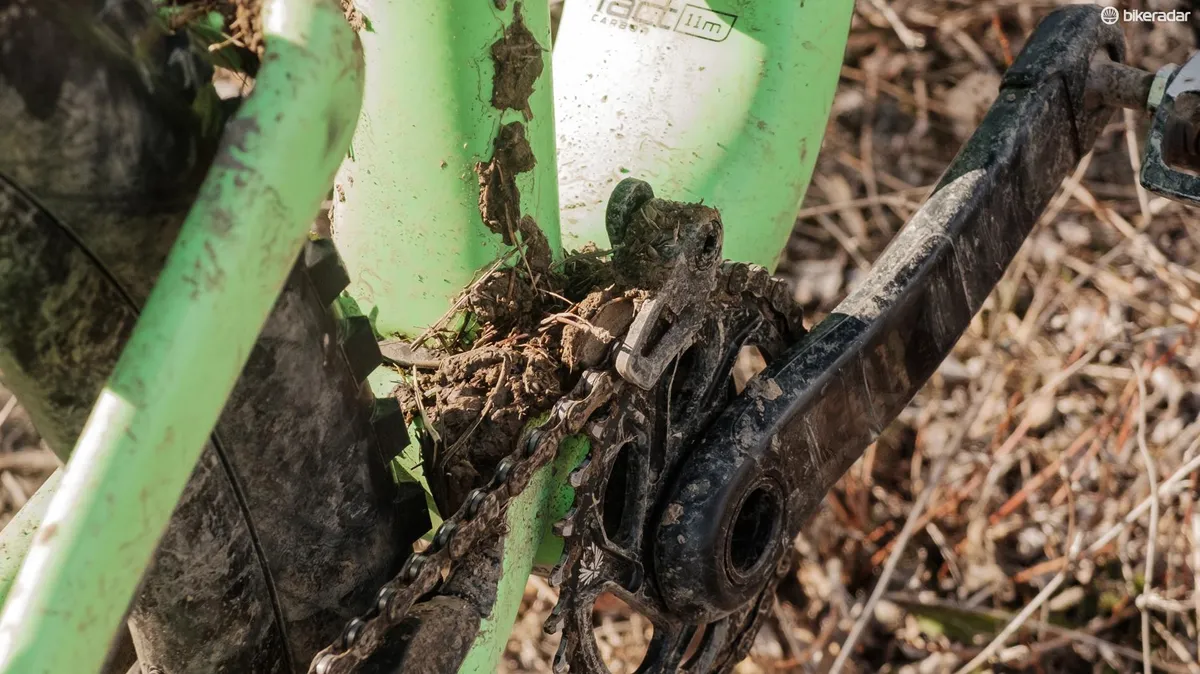
Modern clutch-equipped drivetrains mean that chain retention is basically a non-issue these days, but I was still pleased to see Specialized speccing the Stumpjumper with a neat little ISCG05-mounted top guide. This stayed quiet even during the sloppiest grime.
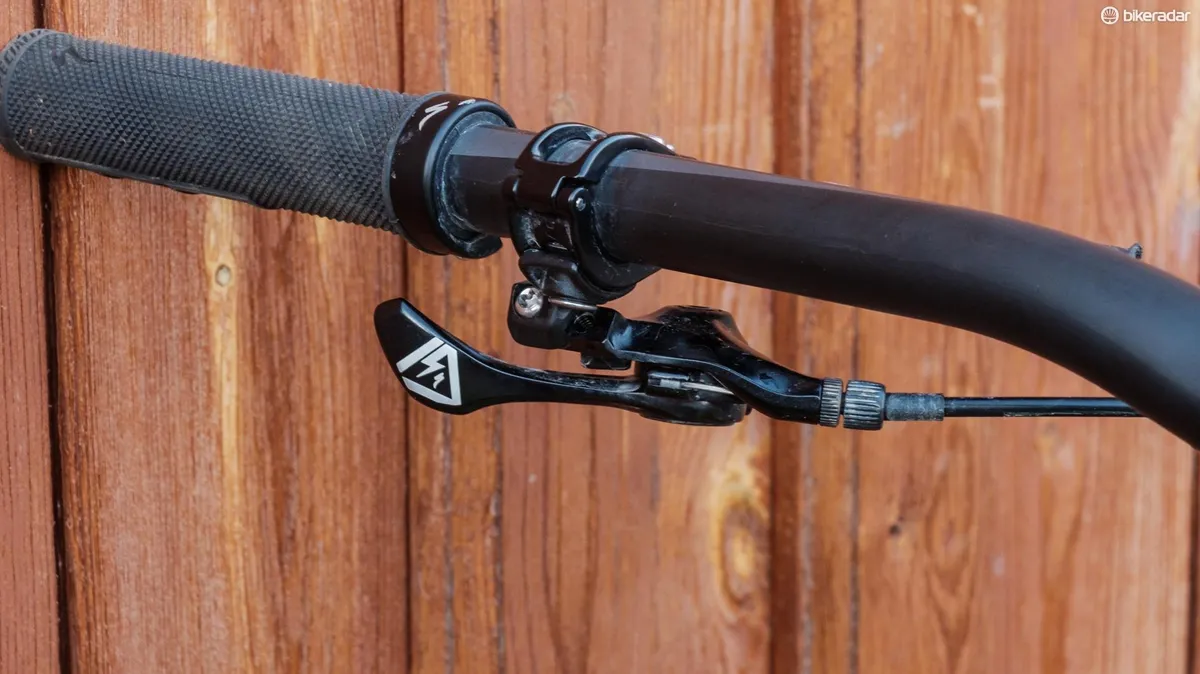
The 16-position Specialized Command Post dropper performed flawlessly throughout our three muddy test rides, maintaining a slightly alarming teste-smashing return velocity.
I was pleased to see all of the bikes in the long travel Stumpjumper range specced with a very capable demi-fat 2.6in Butcher/Purgatory tyre combo (the short travel bikes use the same tyres in a 2.3in width).
Crowd-pleasing fast-rolling tyres have their place, but I think a big, blocky and highly capable tyre is the better choice in most situations.
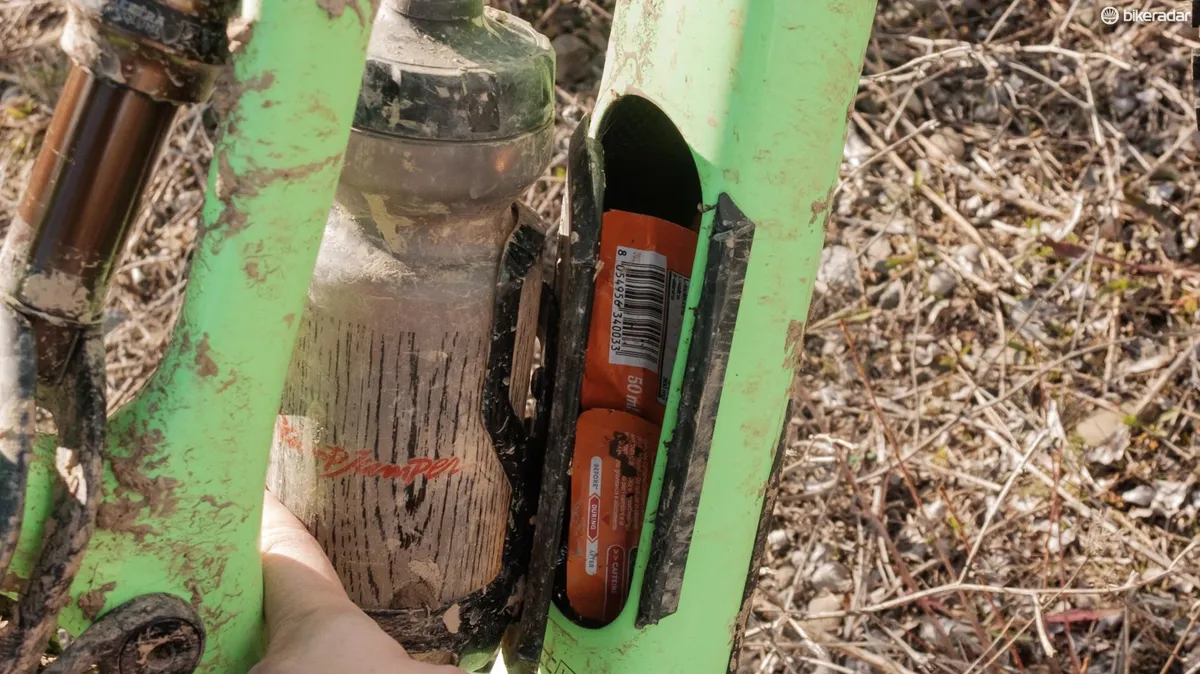
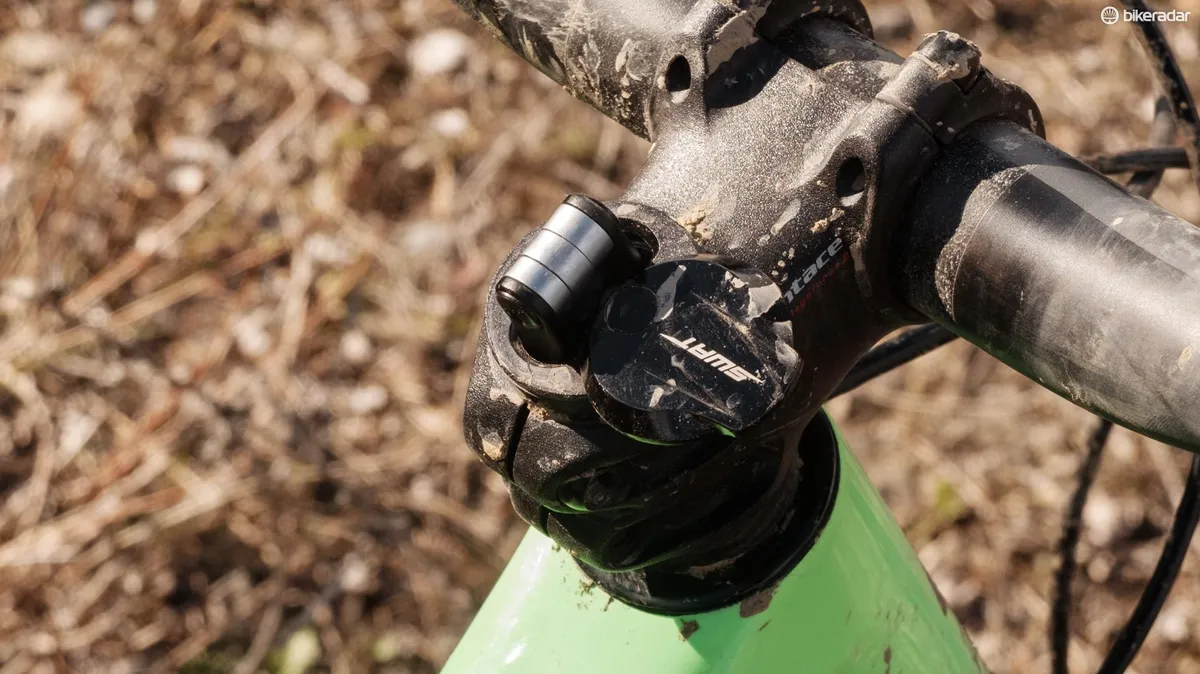
Matched with a suitably on-trend and enduro-compatible bum bag, the SWAT box on the down tube swallowed my day’s riding supplies with ease.
The new design, with the hinge integrated into the frame, is a touch easier to use than the one of old. The neatly integrated multi-tool in the steerer is also a natty touch.
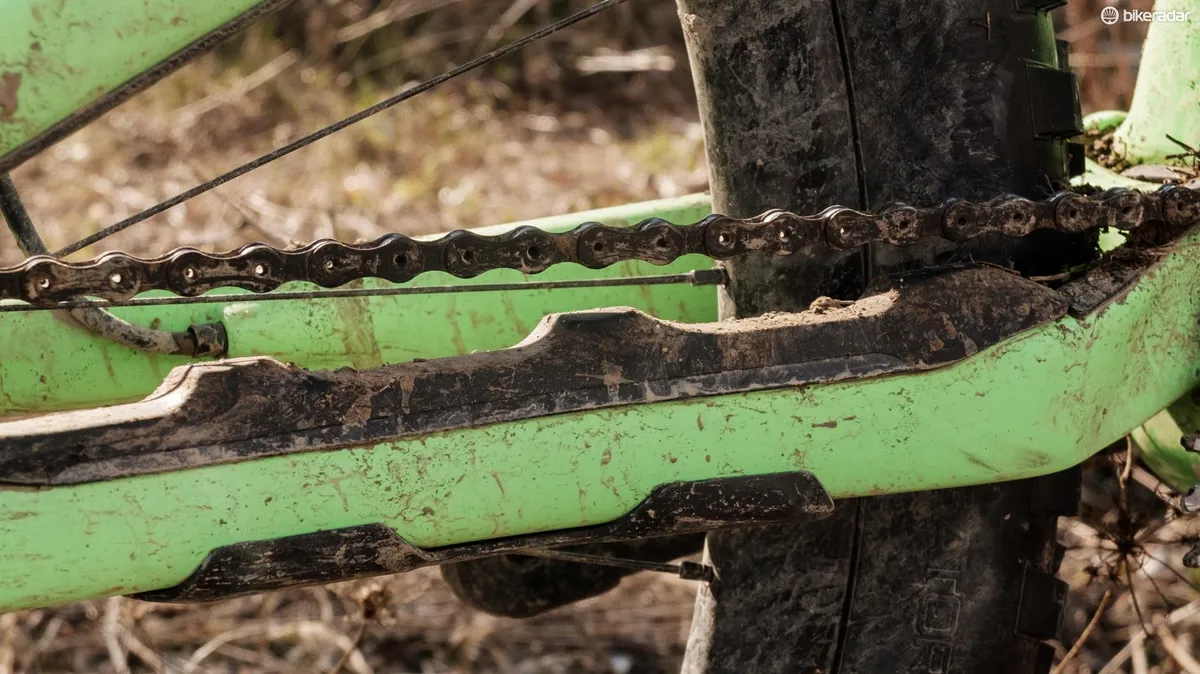
Specialized claims that the little raised bumps on its fancy chainstay protector disrupt the 'waves' created in the chain when riding over rough terrain, reducing chain slap noise. Without resorting to using high-speed video, I cannot comment on the effectiveness of these bumps, but there's no denying the rear end is quiet.
Specialized S-Works Stumpjumper 29er long-travel early verdict
The mix of a super-stiff carbon chassis, great suspension performance, nimble handling and very capable 2.6in tyres makes for an incredibly fun yet capable ride that encourages you to hit truly reckless lines.
That the bike is easy to live with and highly adaptable thanks to its threaded bottom bracket shell, the easiest internal cable routing I’ve ever come across and clearances for 3.0in tyres is just the icing on the cake.
With that said, I doubt many will be jumping to change this bike from the off — the build is bang on (as you would hope of a $9,500 bike) and if I was speccing my own 140mm travel trail bike, it would look a lot like this.
Should I buy a Stumpjumper or a Stumpjumper Evo?
There are of course limits to how far you can push a 140mm travel trail bike, but for those who want a bike for more hardcore riding or something more progressive, there’s always the Stumpjumper Evo or the Enduro.
Having been rad-icalised by the teachings of the likes of Seb Stott, I would definitely place myself firmly in the pro-progressive camp when it comes to MTB geometry.
This is somewhat of a reflection on the steep and technical terrain I enjoy riding most, and having ridden both, the Stumpjumper Evo is probably the bike for me (you can read more about the Evo here)
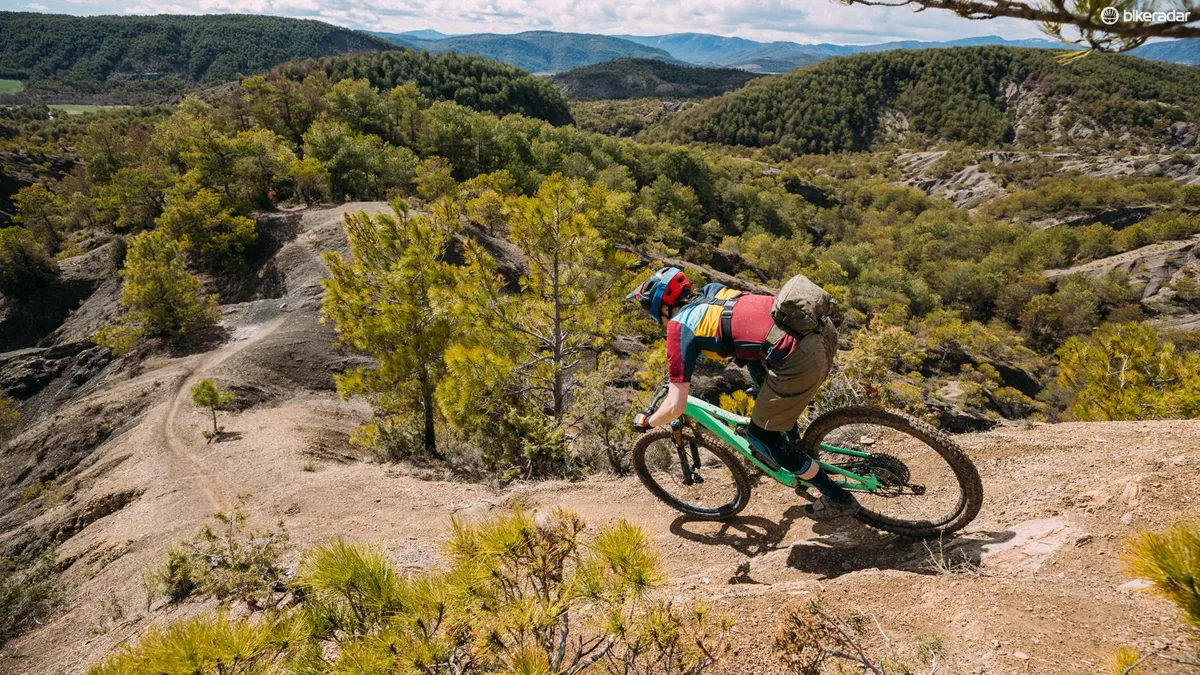
But for those who want a bike that strikes a good balance between playful and confident handling, the new Stumpjumper is unlikely to disappoint.
